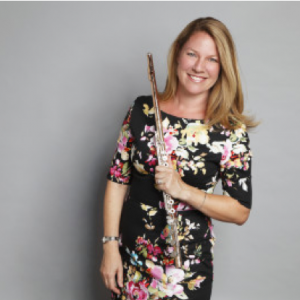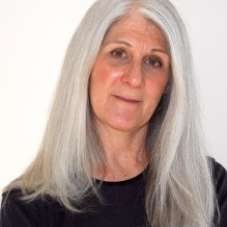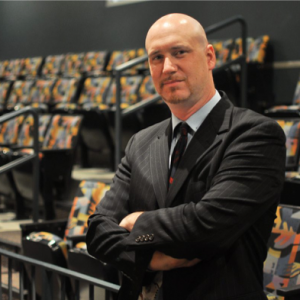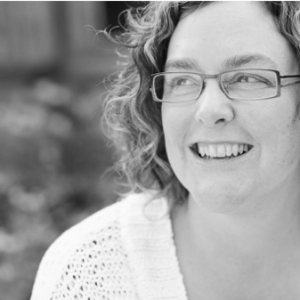In comparison to the invention and practice of art, which dates back nearly 30,000 years, Arts Management is brand new. Programs focusing on Arts Management were not created until the 1970s, following the establishment of the National Endowment for the Arts in 1965, which stressed the need for leaders in the arts. The growth in the field throughout the last 50 years parallels that of the advent and rise of modern technology such as the computer (1970-80s), the internet (1980-90s), apps (00s), and social media (00s).
These technological advances have led to improvements in understanding and building audience engagement and navigating the necessity of marketing for artists in the 21st century.
Focusing on the development of the internet, we can see how digital technologies have shaped the way we connect with audiences, spread our missions and messages, and promote our artists.
Below are snapshots of the creative economy through the lens of practitioners who utilize technology in their work in arts management.
Dr. Michelle Stanley
LEAP Director
Professor of Flute, Colorado State University
Flutist

“My work as a musician and as an administrator has seen a trajectory into technology in a way that is unique to those of us who entered the work force prior to the internet. As a musician, I have experienced changes in branding, marketing and expected entrepreneurship as I developed myself in the classical music world. Prior to these technology-based skills, our focus as artists was networking and building a community of friends and colleagues that could help get me in front of a conductor, another artist or secure an audition. What is brilliant about living in the time we are now is that there is an ease to creating these same networks with the foundations of relationships built in the concert hall. We still thrive using in-person connections, but we can enhance this work through social media and other digital means.
As an administrator in the arts, I see the use of technology as another means to be creative. Whether through website design, digital interaction, or beauty through branding, we arts managers and administrators encourage and consume this creativity on screen. While our lives now are heavily focused on communicating online, I see this as a functional and meaningful way to consume arts messaging more easily.”

Sandy Ceas
Adjunct Professor, LEAP
International Visual Artist
“I grew up thinking I would like to trek around the world to experience new cultures and relationships. As a creative, I did travel often to foreign lands, but to accomplish any project it took a sizable amount of time to build trust with a new community before production occurred. It was a face-to-face world with only telex as our communication technology. When the internet arrived, a global platform developed for creatives. It offered a new avenue to build relationships with a new etiquette to follow. Once imaging was added, the kinship of the world grew even closer. Creatives could share ideas at rapid speed, adding to an innovation explosion. The avant-garde was challenged, and creative equality had arrived.
I never thought I would live to carry a device that could route my path, reach my constituents, translate my language, pay my bills, send my messages or smiling face across the world, at the touch of a finger. Technology has opened a world of shared creativity that any artist or arts administrator cannot live without. In the field of art, technology has offered a new interpretation of collaboration, and a delivery system that can turn the pipe dream of yesterday and the vision of tomorrow, into the reality of today.”
Connor Kealey
LEAP Graduate, ‘16
Enrollment Services Supervisor, Montgomery County Community College
Performing Artist

"Working in the arts and education, we are constantly faced with evolving challenges. With technology also evolving, it can seem daunting to stay ahead of, or at least on pace with, the curve. In order to not be left behind, I have always taken a "can do" attitude when it comes to learning new skills and adapting to new technology.
The vastness of the internet has given us the gift of endless knowledge, and technology has shortened the length of tasks, but we are still left to figure out how we will use these things to overcome our challenges and to respond to change. Creativity propels us to figure out the rest through interpretation and innovation.
I am confident that with a symbiotic and creative approach to technological solutions there is an unimaginable amount of possibilities for how we can better connect with one another to create positive change and solve both global and local issues."

Jack Rogers
Adjunct Professor, LEAP
Executive Director, Lincoln Center
Performing Artist
“In my other life as the director of a regional performing arts center, we are currently celebrating our 40th anniversary. In preparation for this momentous occasion, I had the (ahem) “pleasure” of going back through 40 years of contracts and files on the artists that had performed on our stage. While this research did reveal some wonderful surprises — who knew that U2 had played our stage on their second ever American tour? — it also gave me the opportunity to reflect on the many changes to our industry that mirrored the rise of technology during that time period.
Until the mid-90s, almost everything we had in our archives was written on a typewriter. Much of the work appeared on carbon paper, for ease of reproduction. The vast majority of these files contained glossy 8x10 black and white photographs, headshots that would have been published in the local paper. We no longer must fly to New York or London as the only opportunity to see an artist’s work, when I can get a multi-camera HD recording of the work delivered to my Drobox or Google Drive. Today we can realize an entire deal, from the initial conversation through negotiation to executing the contract, entirely online without a face-to-face meeting or phone conversation, without handwriting notes in the margins of the deal memo, or, heaven forbid, having to fax anyone. Today, the local paper may have less subscribers than your own organization has Facebook followers.
The best artists and arts organizations, even if they work in a discipline that is thousands of years old, stay on the leading edge of society’s ever-adapting technologies. Do you have high quality video of the work you do to share with stakeholders? Have you shared moments from the studio with your online audience? Do you manage an email list to correspond with your community? The age-old admonishment to the aspiring artist to ‘know your audience’ has perhaps never been truer than in the ever-segmented digital dimension of the 21st century. If the arts are indeed a mirror, or as Brecht said, ‘a hammer to shape reality,’ and we live in a technologically driven society, then the cultural leader must master artistic employment of applied science.”
Jill Stillwell
Adjunct Professor, LEAP
Former Cultural Services Director, City of Fort Collins
Arts & Culture Consultant

“As an undergraduate, I worked for the Collegian newspaper as a pasteup artist. I physically cut and pasted the articles, photographs, and comics onto sheets of grid paper to be driven to the printing press. As a work study in graduate school, I organized the art work slide library for art history lectures. Do slides even exist anymore? For my thesis, I wrote dozens of letters to galleries and museums to discover if they had artwork that pertained to my research topic. Today, a Google search would complete the task in seconds.
In my career, we moved from a telephone with a receptionist to email, and now, real-time texts and social media for communication. The immediate connectivity we have is incredible and allows us to link to colleagues and experts, find just about any resource quickly, and understand the larger scope of the art world than we could 25 years ago. As I write this, I’m in awe at how I connect with students across the country and on other continents as an online instructor and how technology has made that possible.”

Jennifer Zidon
LEAP Graduate, '18
S.T.A.M.P. Executive Director
Writer, Poet
“Being an arts leader & cultural manager, a major concern is how best to reach and communicate value to your audience. The advancements in technology, especially with the genesis of social media, blogs, vlogs, build-your-own websites, and so many other digital platforms have made audiences more accessible in certain ways and more elusive in others.
I have always been involved in the literary arts—hosting poetry nights in college, writing for college and local papers, submitting and publishing poems and articles in different publications over a 20-year span. Before social media, my audience was gathered by posters and word of mouth; maybe I’d get a blurb in a local paper if it was a slow week, or someone, by some miracle, would print a carefully worded press release. Communicating with an audience was more difficult, but if I was able to reach my goal, it seemed like I’d really accomplished something.
Today, that accomplished feeling hasn’t changed but the path to it has. Audiences are easier to reach, yes, but they are also harder to keep engaged. Your audience not only has access to your message, but they also have access to everyone else’s messages—in any community— at their fingertips, 24-hours a day, which can turn into static or white noise.
Through the small nonprofit organization that I run called STAMP (Sustainable Touring for Artists, Musicians, and Performers), I am able to communicate directly with artists who are concerned with what touring does to the environment. STAMP helps these artists by renting vehicles that use recycled biodiesel fuel to promote low to no carbon tours. It is a difficult message to communicate to the right audience, but with the use of hashtags, strategic wording, and easy-to-build websites, the value of our company has found an audience that cares about our message, and our audience keeps growing.
It is true that in a digital world, it becomes even more important to be able to communicate well with your audience, conveying the value of whatever you offer in a very brief window of time. It is also true that in this same digital world, it has become easier to be more directed with your messaging and find an audience that supports your work and shares your goals.”
Feel like adding your voice to the story? Send us an email telling us how technology has changed your creative practice and we’ll share it on social media.
